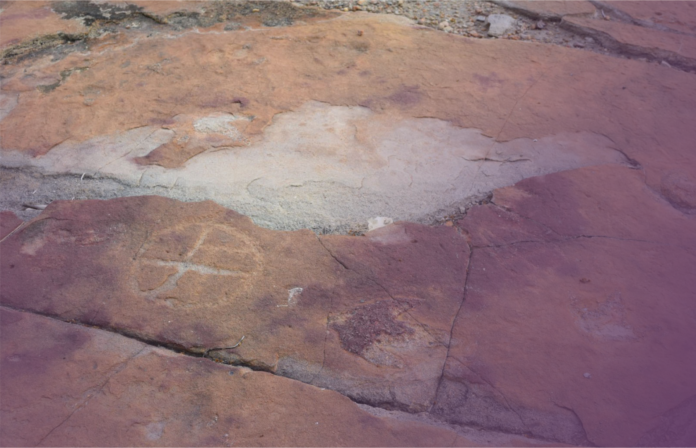The investigation conducted to the petroglyphs of old times has shown that people of those times were aware of dinosaurs.
In a very interesting event, scientists have found out something they had not expected – that the ancient people in Brazil knew about dinosaurs. Engraved drawings, or petroglyphs, were observed next to the footprints of dinosaurs at Serrote do Letreiro site in Brazil at the Paraíba State.
The carvings, known of by archaeologists since 1975, assumed a new significance when recent field surveys revealed additional markings, dating back to the Cretaceous Period, near dinosaur tracks. The connection between petroglyphs and the dinosaur tracks is unique and researchers opine that it can have far-reaching implications for a wide range of disciplines such as paleontology, archaeology and cultural heritage studies.
The petroglyphs, produced by tribes indigenous to this area between 9,400 and 2,620 years ago, clearly demonstrate that ancient communities once made a conscious effort to have their presence recognized by leaving a mark on the landscape. Some drawings are filled with abstract shapes, while others look like plants or simple geometrical forms, thus, increasing our curiosity about their importance and function.
One possibility is that the community huddles, hopefully helped by the psychedelic plants, could have led to the creation of the drawings. The choice of the creators of petroglyphs to put them near the tracks of the dinosaurs shows the artful thinking of the ancient artists.
However, whether or not the predecessors fully understood the meaning of the dinosaur footprints is still unclear. Nevertheless, this finding allows us to explore the way ancient cultures interacted with their environment and how they interpreted the world around them. Scientists suppose that the fact that people use to create stories with supernatural characters linking nature and imagination proves that human beings are always looking for spiritual meaning.



